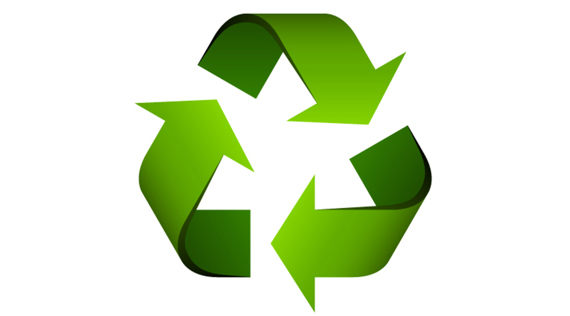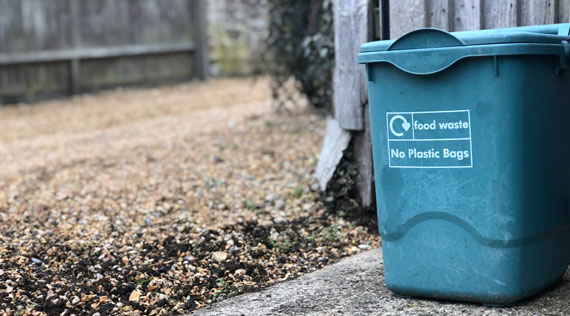Ecomaine will roll out the second phase of its recycling educational program next month, sending two interns to show homeowners in five communities what materials can and can’t be put in recycling bins. The program, which started last fall, has already shown that many Greater Portland residents are unaware of the difference.
From April until early June, the interns will go through residential neighborhoods in Portland, Scarborough, South Portland, Westbrook and Yarmouth, flagging bins with color-coded tags to indicate whether they contain mostly recyclable material or too many contaminants – dirty diapers, food scraps and Styrofoam, for example – which can’t be recycled and must be removed.
Ecomaine conducted the program for 12 weeks last fall in South Portland and Westbrook, and for eight weeks in Portland and Scarborough, said Matt Grondin, ecomaine’s communications manager. The second phase will run for 10 weeks, with two weeks spent gathering baseline data and eight weeks examining and tagging the residential bins, Grondin said.
The interns examine material inside the bins, but don’t touch or remove any of it. They then afix tags on the outside of the bins that tell residents whether they have recycled correctly, and which materials, if any, should be removed. A green tag indicates a job well done; a yellow or red tag indicates a bin contains a lot of contaminants. Red tags mark bins that are so full of contaminants they will not be picked up by the collection company.
The program aims to teach residents to put out bins that are as free of contaminants as possible.
“There is no manipulation of the contents due to safety and privacy,” Grondin said. “We don’t get any loads that are perfect. But when we get down to 25 percent of the load is contaminants, at that rate we can process the material. It has good recyclability. It’s not all trash.”
Bins with too many contaminants increase costs for municipalities by as much as $75 to $80 per ton, Grondin said. Communities in Greater Portland contribute thousands of tons of recycled material to the program each year – as much as 5,000 tons came from Portland during the last fiscal year and 2,200 tons came from South Portland, he said.
Later in the year, more towns will be added from the 68 Maine and two New Hampshire communities that ecomaine serves.
Data from the program’s first phase has already shown it has resulted in changed behavior.
Last fall, the percentage of contaminants collected from recycling bins in one South Portland neighborhood dropped from more than 80 percent to 25 percent, allowing ecomaine to recycle the entire load, Grondin said.
Ecomaine is continuing to analyze data with each new phase of the program, and “to get even better at the data we’re collecting,” Grondin said.
“We have seen some really significant results in behavior change due to this program,” said ecomaine Chairman Mike Shaw, Scarborough’s Public Works director, in a news release. “It makes for an environment that’s easier for our residents to recycle right and keep recyclable materials out of landfills.”

